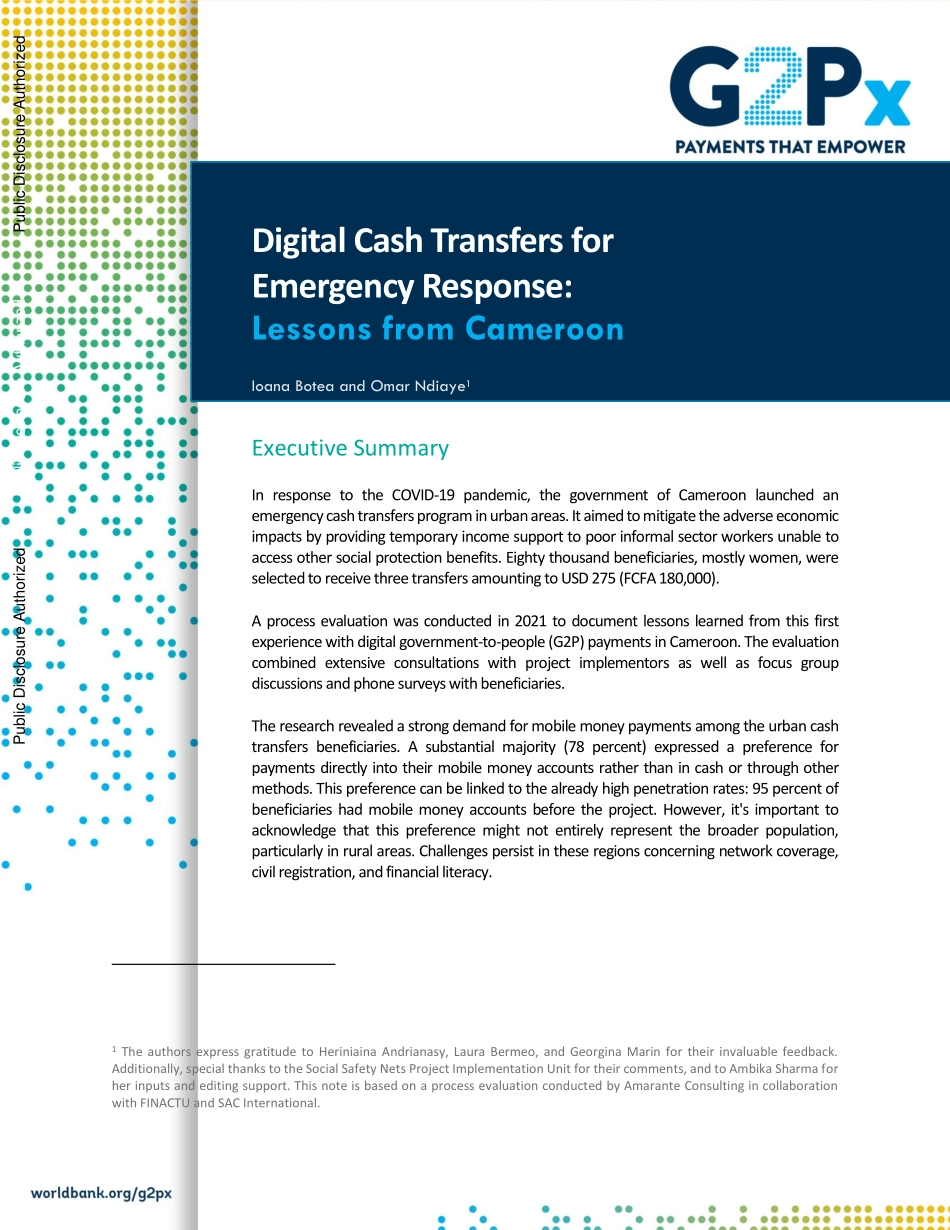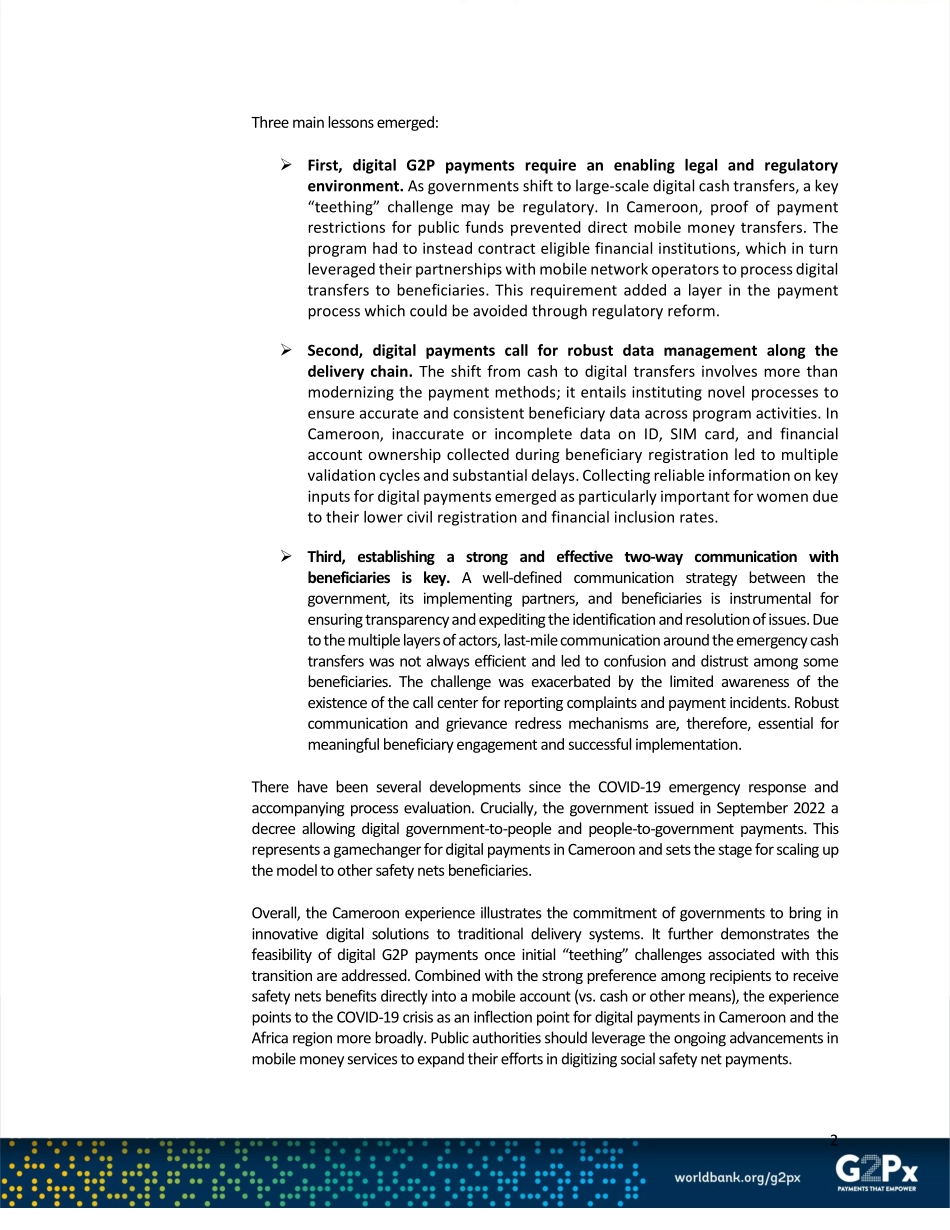Digital Cash Transfers for Emergency Response: Lessons from Cameroon Ioana Botea and Omar Ndiaye1 Executive Summary In response to the COVID-19 pandemic, the government of Cameroon launched an emergency cash transfers program in urban areas. It aimed to mitigate the adverse economic impacts by providing temporary income support to poor informal sector workers unable to access other social protection benefits. Eighty thousand beneficiaries, mostly women, were selected to receive three transfers amounting to USD 275 (FCFA 180,000). A process evaluation was conducted in 2021 to document lessons learned from this first experience with digital government-to-people (G2P) payments in Cameroon. The evaluation combined extensive consultations with project implementors as well as focus group discussions and phone surveys with beneficiaries. The research revealed a strong demand for mobile money payments among the urban cash transfers beneficiaries. A substantial majority (78 percent) expressed a preference for payments directly into their mobile money accounts rather than in cash or through other methods. This preference can be linked to the already high penetration rates: 95 percent of beneficiaries had mobile money accounts before the project. However, it's important to acknowledge that this preference might not entirely represent the broader population, particularly in rural areas. Challenges persist in these regions concerning network coverage, civil registration, and financial literacy. 1 The authors express gratitude to Heriniaina Andrianasy, Laura Bermeo, and Georgina Marin for their invaluable feedback. Additionally, special thanks to the Social Safety Nets Project Implementation Unit for their comments, and to Ambika Sharma for her inputs and editing support. This note is based on a process evaluation conducted by Amarante Consulting in collaboration with FINACTU and SAC International. Public Disclosure AuthorizedPublic Disclosure AuthorizedPublic Disclosure AuthorizedPublic Disclosure Authorized 2 Three main lessons emerged: ➢ First, digital G2P payments require an enabling legal and regulatory environment. As governments shift to large-scale digital cash transfers, a key “teething” challenge may be regulatory. In Cameroon, proof of payment restrictions for public funds prevented direct mobile money transfers. The program had to instead contract eligible financial institutions, which in turn leveraged their partnerships with mobile network operators to process digital transfers to beneficiaries. This requirement added a layer in the payment process which could be avoided through regulatory reform. ➢ Second, digital payments call for robust data management along the delivery chain. The shift from cash to digital transfers involves more than modernizing the payment methods; it entails instituting novel processes to ensure accurate and consistent beneficiary data across...


